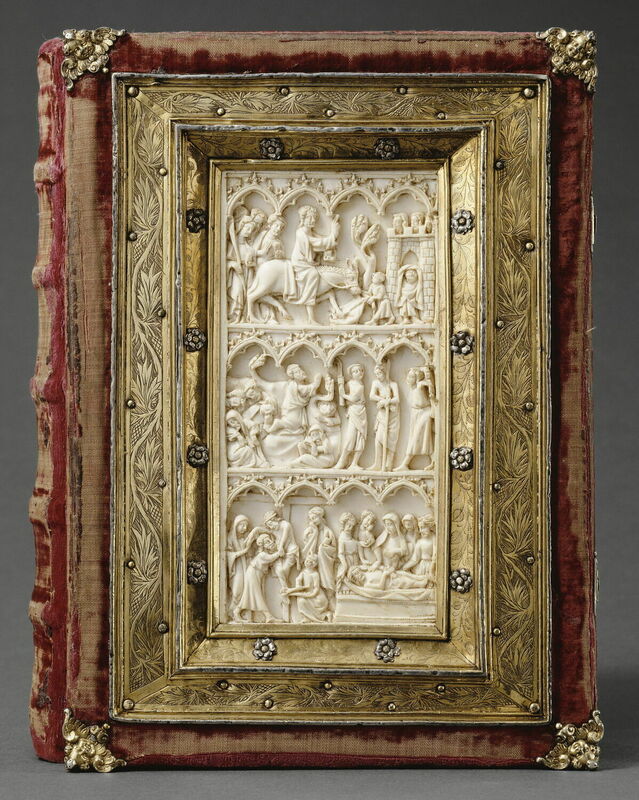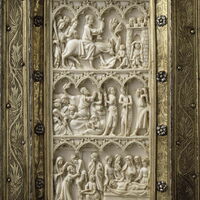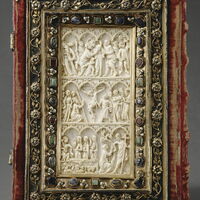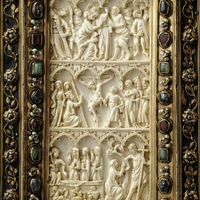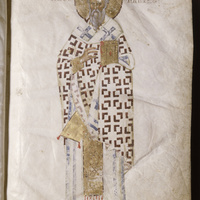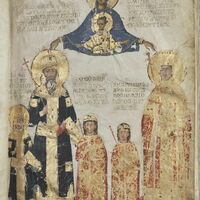French ivory covers for a Byzantine book
Date:
1403 to 1405 (illuminations),
last third of fourteenth century (ivory panels)
Medium:
Ivory
Dimensions:
ivory panels, each 18.5 × 8.6 cm ,
complete binding, 31 × 21 cm
Description:
These ivory panels, originally two leaves of a hinged diptych, were separated to bind the manuscript of Pseudo-Dionysios the Areopagite's writings that was sent from Constantinople to the abbey of Saint-Denis in 1408. The Byzantine book contained the writings of the sainted bishop who was the patron saint of Saint-Denis and of France as a whole.
The diptych was carved in the Ile-de-France in the last third of the fourteenth century. The reliefs depict scenes from Christ's Passion and were meant to be "read" across the two leaves, from top to bottom. The narrative begins with the Entry into Jerusalem on the front (top) and concludes on the back (bottom) with the three Marys visiting the empty tomb and the scene called Noli me tangere ("Touch me not"), words spoken by Christ to Mary Magdalene after his resurrection (John 20:17). The diptych would have stimulated its owner to contemplate Christ's life and death as a means to his or her own salvation.
The ivories' current setting, gilt-silver, gems, and velvet over a wood core, dates to the seventeenth century. The Byzantine book, enshrined like a relic within its ivory covers, was kept at Saint-Denis until the French Revolution dispersed church property. It was sent to the Louvre in 1793.
The diptych was carved in the Ile-de-France in the last third of the fourteenth century. The reliefs depict scenes from Christ's Passion and were meant to be "read" across the two leaves, from top to bottom. The narrative begins with the Entry into Jerusalem on the front (top) and concludes on the back (bottom) with the three Marys visiting the empty tomb and the scene called Noli me tangere ("Touch me not"), words spoken by Christ to Mary Magdalene after his resurrection (John 20:17). The diptych would have stimulated its owner to contemplate Christ's life and death as a means to his or her own salvation.
The ivories' current setting, gilt-silver, gems, and velvet over a wood core, dates to the seventeenth century. The Byzantine book, enshrined like a relic within its ivory covers, was kept at Saint-Denis until the French Revolution dispersed church property. It was sent to the Louvre in 1793.
Relevant Textbook Chapter(s):
10
Repository and Online Resources:
• Read more about this book on the Louvre website (inv. no. MR416).
• Read about these ivories on the Courtauld's Gothic Ivories website.
Image Credits:
Musée du Louvre
